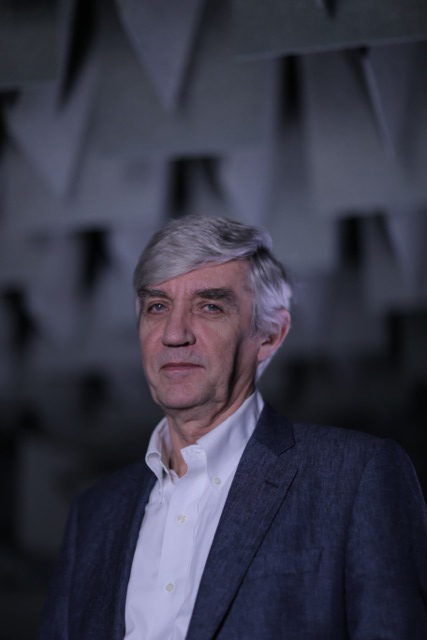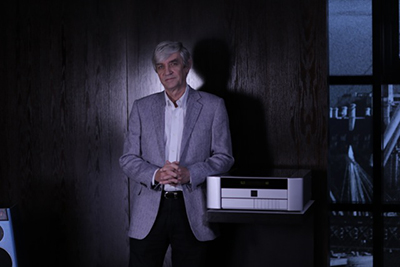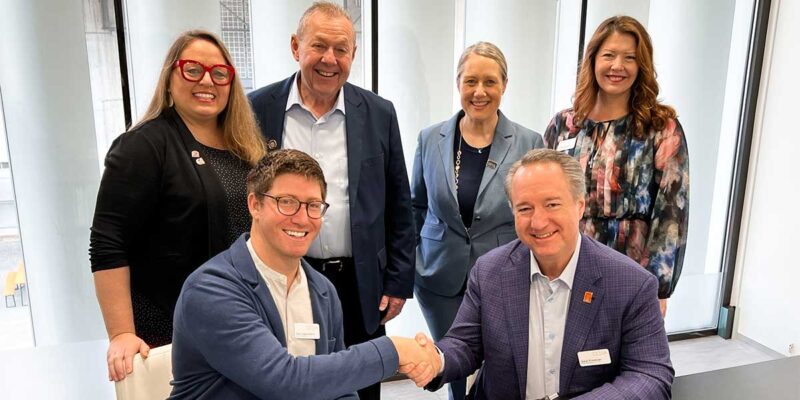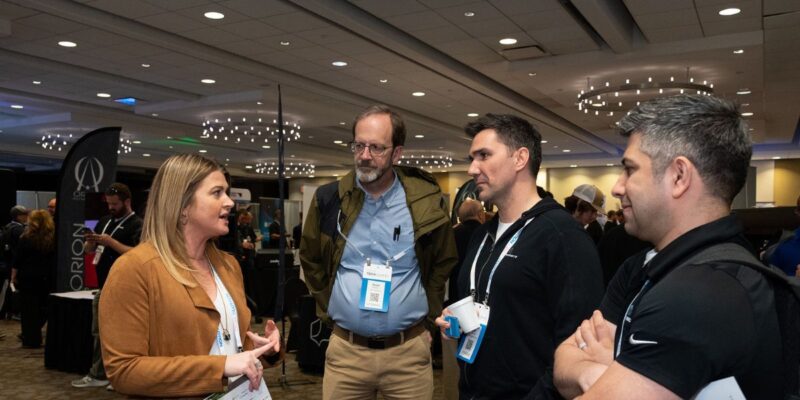Closeup: Lifetime Achievement Award Recipient Robert Stuart
 Via CEDIA
Via CEDIA
Friends and colleagues know him simply as Bob. Industry peers and audio enthusiasts know him as the driving force behind numerous innovations and breakthroughs that have advanced—and continue to advance—the state of the art in digital audio reproduction.
J. Robert Stuart, co-founder, chairman, and technical director of England’s Meridian Group and recipient of CEDIA’s 2015 Lifetime Achievement Award, has spent the past 44 years of his professional career on a quest to capture the excitement and raw emotion of live music in digital recordings, bringing us ever closer to what we experience in a concert hall and what musicians hear in the recording studio.
But Stuart’s work is far from over as he reaches a pinnacle with his latest brainchild—MQA (Master Quality Authenticated)—a remarkable technology that in his words “allows us to capture the nuance and all the detail of the original music performance in a file small enough to download or stream over the Internet.”
Meridian co-founder and long-time collaborator Allen Boothroyd—the man responsible for the brand’s stately designs—said recently: “I never realized when I set up business with Bob that the guy’s a genius.”
His record speaks for itself.
The soft-spoken audio pioneer has amassed an impressive list of innovations, including the world’s first digital speaker, the first audiophile CD player, and the first digital surround processor in addition to inventing MLP (Meridian Lossless Packing) and MQA technologies. Along the way, Meridian has collected numerous honors, including three Outstanding British Product awards from United Kingdom’s Design Council.
THE EARLY YEARS
 Intrigued by sound reproduction from an early age, Stuart built his own audio gear—even a reel-to-reel tape machine—before attending the University of Birmingham where he received a degree in electronic engineering. His studies sparked a lifelong fascination with psychoacoustics, a subject that would ultimately bring focus to his life’s work, including and leading up to MQA.
Intrigued by sound reproduction from an early age, Stuart built his own audio gear—even a reel-to-reel tape machine—before attending the University of Birmingham where he received a degree in electronic engineering. His studies sparked a lifelong fascination with psychoacoustics, a subject that would ultimately bring focus to his life’s work, including and leading up to MQA.
“I was always fascinated by psychoacoustics—how the ear works, how the mind works, how we interpret sound—so I chose electronics engineering with acoustics for my first college degree,” Stuart recalls. “And when I left University I thought, yeah, I want to design audio equipment.”
In 1972, he met Allen Boothroyd while working at a startup called Lecson Audio. Three years later they formed a design consultancy, which put them on the path to founding Meridian in 1977, a company that would specialize in ultra-high-end audio and video gear.
The company’s first product was a self-powered “active” speaker called the M1, which was unusual in those days. “Back then nobody did that…but we always made speakers with electronics built in because we thought it was the better way to make a speaker,” Stuart explains.
READY FOR DIGITAL IN AN ANALOG ERA
By the time the Compact Disc ushered in the age of digital audio in 1983, Meridian was steeped in digital research and poised to introduce the world’s first audiophile CD player. The Meridian MCD and its successor, the Pro-MCD, were widely acclaimed as the best-sounding players at a time when the CD was roundly criticized by aficionados for having harsh, lifeless sound.
“Our view was we can make this sound massively better,” recalls Stuart. “So we did the engineering. By the time we got to the third generation of our player, we had built up tremendous expertise on digital processing. It was a steady climb.”
Building on its digital proficiency, Meridian’s next milestone came in 1989 in the form of the world’s first “digital active” speaker—the D600—featuring a built-in power amplifier and digital-to-analog converter (DAC), making it the first speaker able to accept a direct (pure) digital input. A year later, the company introduced the first “DSP-powered” speaker, the DSP-6000, predecessor to the current flagship DSP8000, which is still going strong, having undergone three major revisions since it was introduced in 2000. (The 25th Anniversary edition of the speaker sells for a cool $80,000 a pair.)
“Instead of having an electronic crossover, we figured we could do a digital crossover and have a separate DAC for each unit [woofer, tweeter, etc.] and that would give us tremendous control, power and [sound] transparency,” Stuart explains. “If you bought a DSP8000 in 2000 it can be updated today” thanks to the card-based modular architecture Meridian pioneered in 1997, which made it possible to upgrade products—and reduce the chance of obsolescence—by changing removable circuit boards or “cards.”
REDEFINING DIGITAL AUDIO
Stuart’s pioneering work included the launch of the first digital surround-sound processor—the Meridian Digital Theatre—in 1994 and continued through the 1990s, reaching a crescendo with the development in 1999-2000 of Meridian Lossless Packing (MLP), a “lossless” audio compression scheme that became the foundation of the high-quality Dolby TrueHD soundtracks found on today’s Blu-ray Discs.
“All through my career we continued to study psychoacoustics and the neuroscience of hearing,” Stuart observes. “But one of biggest things that set me on the road to MQA was when we invented MLP.” Around that same time portable MP3 players hit the market, followed by the iPod in 2001. In a few short years, the public had chosen the convenience of having a tiny music player that could hold 1,000-plus songs over having fewer songs with better sound quality.
 “CD was the only place people could get high-quality sound,” Stuart recalls. “Vinyl was gone and MP3 and iTunes sounded terrible so we put a lot of effort into the engineering and psychoacoustics of digital audio,” which ultimately led to MQA.
“CD was the only place people could get high-quality sound,” Stuart recalls. “Vinyl was gone and MP3 and iTunes sounded terrible so we put a lot of effort into the engineering and psychoacoustics of digital audio,” which ultimately led to MQA.
For Stuart, MQA technology represents the culmination of his life-long pursuit of sonic perfection.” More than just another audio format, MQA is an infrastructure of technologies that establishes a high-quality signal path from the recording studio to the speakers in our homes. Stuart also sees MQA as a unifying solution—a magic bullet of sorts—that enables music companies and artists to offer a single file that combines the best possible sound quality with portability and convenience.
“When we say MQA captures the actual sound of the studio, we really mean that,” Stuart says. “With MQA technology we’ve now got a file that is indistinguishable from the fullest level of the studio sound quality yet small enough to stream, download, or put onto a CD—you can make an MQA CD that sounds amazing.
“MQA is a long-term project and a very noble one to make the archive better so we can re-release recordings and set up a situation where music companies and artists have a way to re-excite people about their music. It’s a very big idea.”
This blog was reprinted with permission from CEDIA and originally appeared here.





